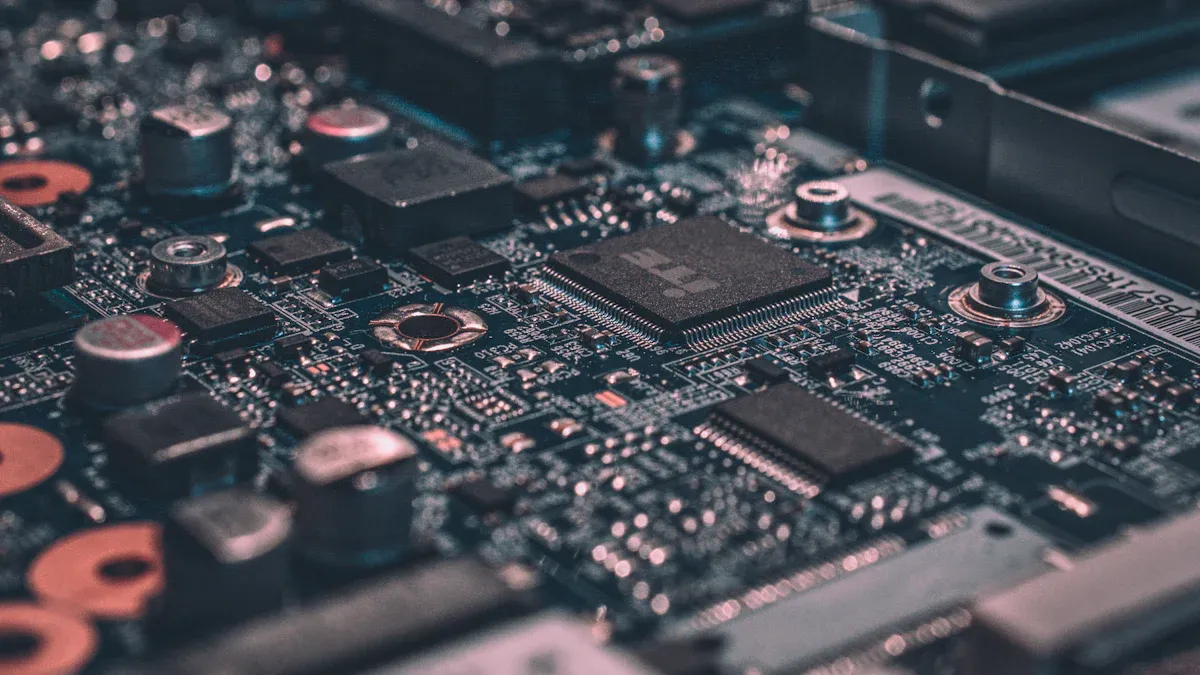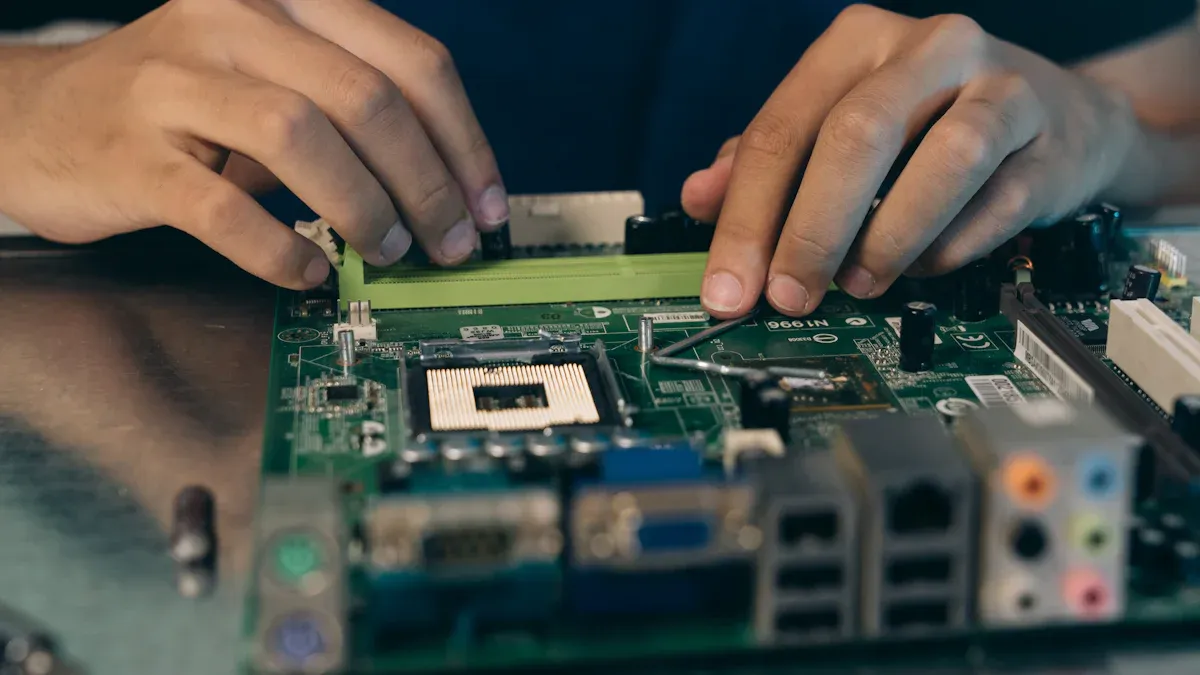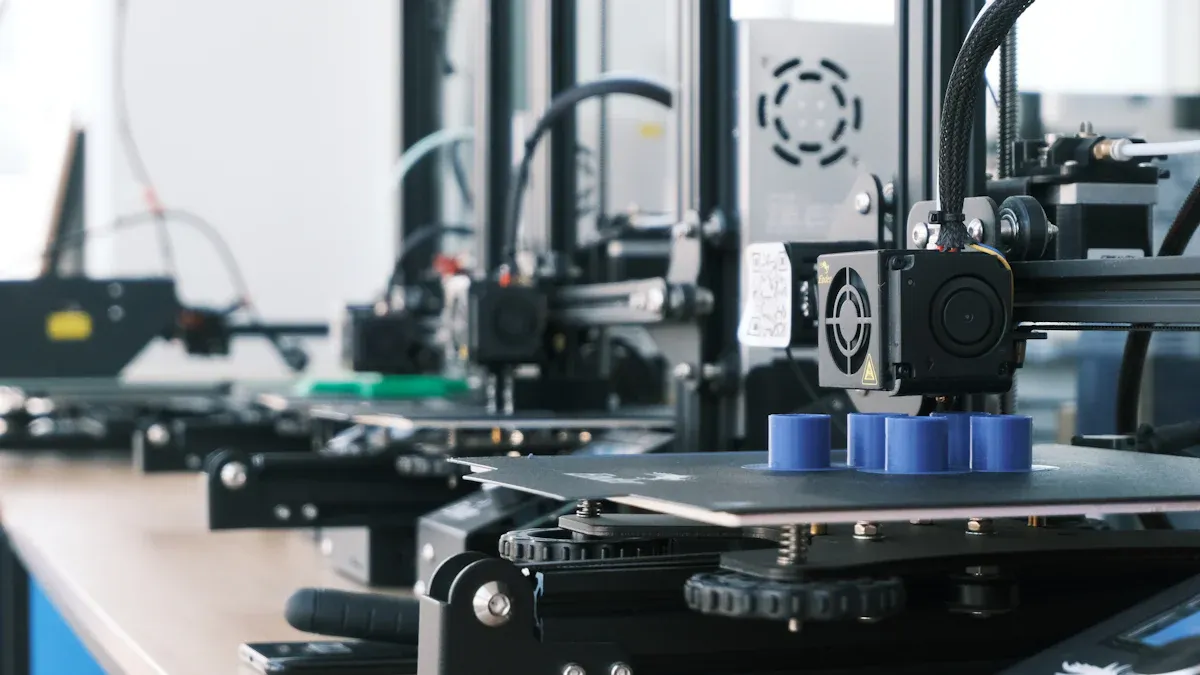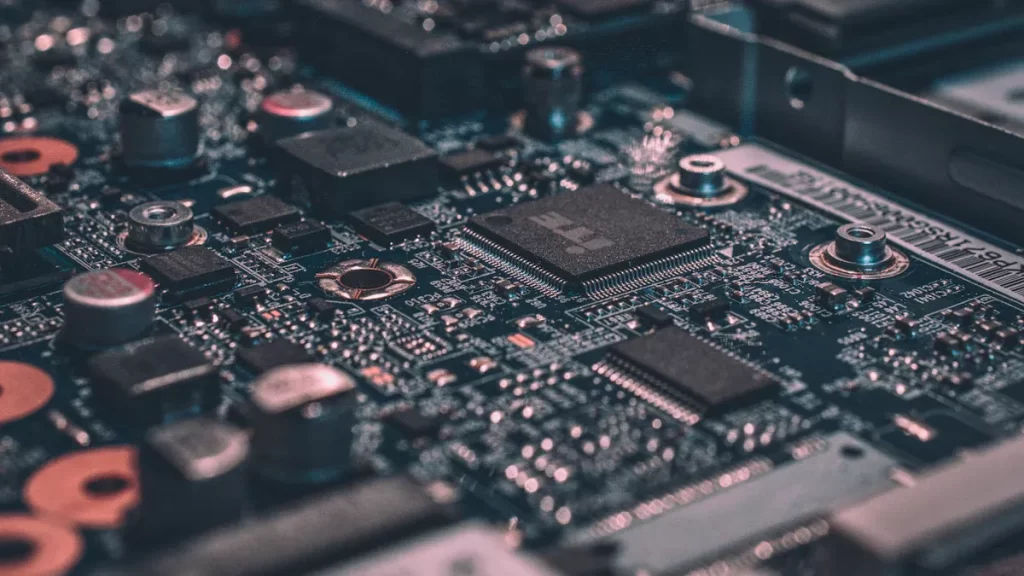
Outsourcing medical device PCBA manufacturing can improve your business. It helps lower costs, gain expert skills, and focus on key tasks. For example, hiring outside companies can cut spending on buildings and workers. The worldwide PCB and PCBA market, worth $68.4 billion in 2023, shows this trend is growing. But outsourcing has risks too. Protecting ideas and ensuring good quality need close attention. Weighing the good and bad sides helps you make the best choice for your business goals.
Key Takeaways
Hiring others to make PCBAs can save money and time. This lets companies focus on important tasks like research and marketing.
Working with skilled manufacturers gives access to expert knowledge and new tools. This helps make better products faster.
Outsourcing can help create products quickly and sell them sooner. This keeps companies ahead in the busy medical device market.
Clear communication and good agreements are key to avoid problems and ensure quality when outsourcing.
Picking the right partner is very important. They should match your goals and follow industry rules.
Pros of Outsourcing Medical Device PCBA Manufacturing

Saving Money and Using Resources Wisely
Outsourcing PCBA manufacturing can help save money and time. Working with skilled EMS providers means you don’t need to buy costly tools or hire many workers. This lets you spend more on important things like research or advertising.
For instance, companies that outsource PCB assembly save about $142,000 yearly. PCB engineers also save 159 hours a year, boosting productivity and cutting costs. Outsourcing is eco-friendly too, as it reduces waste and improves resource use.
Benefit | Explanation |
|---|---|
Lower Costs | Companies save money while improving product quality and user experience. |
Time Efficiency | Engineers save 159 hours yearly, leading to big savings. |
Eco-Friendly Practices | Reduces emissions and uses resources better with smart tools. |
Outsourcing helps you run a smaller, simpler business. You avoid managing big inventories and cut extra costs. This way, you can focus on what your company does best while your partner handles the rest.
Gaining Expert Skills and New Technology
Outsourcing gives you access to experts and advanced tools. EMS providers are skilled in making complex medical PCBs. They ensure your products meet high standards and follow rules.
These providers use top-notch equipment and testing methods. This ensures your PCBs work well and last long. Their knowledge helps improve your devices, giving you an edge over competitors.
You also benefit from their wide experience. They’ve worked on many projects, so they make fewer mistakes. This means your products are made faster and more accurately.
Getting Products to Market Faster
Speed matters in the medical device world. Outsourcing helps you launch products quicker. Contract manufacturers have systems to scale production fast. This is great for companies introducing new products or growing their market.
Outsourcing can cut development time by 40%, speeding up hybrid medical tech launches. It also makes FDA 510(k) clearance 40% faster, reducing time-to-market by 5.2 months for complex devices.
Evidence | Effect on Speed |
|---|---|
35-50% Cost Savings | Helps mid-sized companies grow and enter markets faster. |
40% Faster Development | Speeds up hybrid medical technology launches. |
40% Faster FDA Clearance | Cuts time-to-market by 5.2 months for complex devices. |
Outsourcing lets you focus on creating and planning while your partner handles production. This teamwork ensures your devices hit the market quickly, keeping you ahead of competitors and helping patients sooner.
Reduced Internal Resource Strain
Outsourcing medical device PCBA manufacturing eases the workload for your team. By working with skilled providers, your employees can focus on important tasks like customer care and new ideas. This helps your team spend time on things that grow your business.
Making PCBs in-house needs many resources. You need trained workers, special tools, and enough space. These needs can stress your team, especially if they already have many jobs. Outsourcing solves these problems. Your partner handles the technical work, letting your team focus on big goals.
Tip: Outsourcing works well for small and mid-sized businesses. It gives you access to top PCB manufacturing without straining your team or budget.
Outsourcing also cuts down on training needs. PCB technology changes quickly, and training your team can be expensive and slow. A good partner stays updated on trends, making sure your products meet current standards. This saves time and keeps your devices competitive.
Scalability and Flexibility in Production
Outsourcing makes scaling and adjusting production easy. If more people want your medical device, your partner can quickly make more. This ensures you meet demand without delays or problems.
Producing in-house struggles with sudden changes. You’d need more workers, tools, and new plans. These steps take time and money. Outsourcing skips these issues. Your partner already has what’s needed to scale production fast.
Flexibility is another big benefit. If your product design changes, your partner can update their process. This is important in the fast-moving medical device world, where new ideas lead to success. For example, if you need a new PCB design, your partner can make changes without slowing production.
Note: Outsourcing helps with seasonal demand too. During busy times, your partner can make more products. When demand drops, they can make less, saving you money.
Outsourcing keeps production smooth and flexible. It lets you focus on growing your business while your partner handles the hard parts of manufacturing.
Cons of Outsourcing Medical Device PCBA Manufacturing
Losing Control Over Production
Outsourcing PCBA manufacturing means you might lose some control. It can be harder to check quality and keep things consistent. Your partner might use different methods or materials than you expect. This could cause problems in production.
Sharing knowledge with your partner is also tricky. Your team knows how to build and test your products best. If this knowledge isn’t shared well, issues can happen. Poor planning can lead to too much or too little stock. This wastes resources and disrupts your supply chain.
Possible Problems | Explanation |
|---|---|
Sharing Knowledge | Important expertise must be shared to avoid problems. |
Testing Equipment | Not planning for custom tools can cause delays and costs. |
Stock Issues | Bad planning may lead to wasted or missing inventory. |
Keeping a close eye on outsourcing is important. Without it, you might face delays, higher costs, or lower product quality.
Risks to Your Ideas and Data
Outsourcing can put your ideas and data at risk. Sharing designs with an outside company increases the chance of theft. Old equipment used in manufacturing can have weak spots hackers might exploit. Remote connections for fixing machines can also create security risks.
Insider threats are another concern. Workers with access to private information could be tricked by outsiders. This might lead to data theft or unauthorized access. Picking a trusted partner and using strong security measures is key.
Old equipment can make stealing ideas easier.
Remote connections might create security gaps.
Insider risks can lead to stolen or leaked data.
Protecting your ideas is very important when outsourcing. Use contracts, agreements, and regular checks to keep your designs safe.
Communication Problems
Outsourcing can make communication harder. Working with a partner in another country may bring language and cultural differences. Time zones can also make it tough to stay in sync. These issues might cause delays or mistakes.
Good communication with your partner is crucial. But managing operations across regions can be challenging. Misunderstandings or unclear instructions can make things worse.
Keeping quality standards may become harder.
Talking with vendors might face challenges.
Time zones and cultural gaps can cause delays or errors.
To fix these problems, set clear rules for communication. Regular meetings help both sides stay on the same page and work together smoothly.
Hidden Costs and Unexpected Expenses
Outsourcing pcb assembly might look cheaper at first. However, hidden costs can appear later and hurt your budget. Knowing these costs helps you plan better and avoid problems.
Regulatory Compliance Costs: Following strict rules for medical devices needs testing and audits. These steps can add big costs to your project.
Materials and Components: Special parts for medical pcbs often cost more. Delays in getting these parts can also raise expenses.
Manufacturing Costs: Outsourcing lowers in-house costs, but you still pay for your partner’s tools and workers.
Quality Assurance and Testing: Careful testing ensures good products but increases overall costs.
Project Management: Working with an oem partner takes time and resources from your team.
Intellectual Property Protection: Protecting your designs means paying legal fees and other costs.
Logistics and Shipping: Moving products across borders adds transportation expenses.
Travel and Communication: Visiting your partner and staying in touch can cost a lot.
Risk Mitigation: Fixing delays or problems may need extra money.
For example, XYZ Medical Devices spent $125,000 outsourcing a wearable heart monitor. This included $50,000 for design, $20,000 for compliance, and $30,000 for materials. Indirect costs like $15,000 for management and $10,000 for protecting ideas also added up.
Tip: Make a detailed budget before outsourcing. Include all direct and hidden costs to avoid surprises and work smoothly with your partner.
Quality Assurance and Compliance Concerns
Keeping quality high and meeting rules is very important in medical device making. When you outsource, you trust your partner to meet these standards. Problems can happen if their methods don’t match your needs.
Without proper checks, quality can drop. For example, using bad materials or skipping tests can lead to products that fail rules. This can hurt your reputation and even risk patient safety.
Industry | Quality Checks | Key Takeaways |
|---|---|---|
Medical Device Maker | Raw material inspection | Careful checks stop future problems. |
Aerospace Company | Tool checks, training | Regular audits ensure rule-following. |
Consumer Electronics Brand | Soldering methods | Teamwork improves quality control. |
In medical devices, checking raw materials is very important. It ensures every pcb meets the needed standards. Regular audits and training also help keep up with rules. Without these, bad products could cause recalls or legal trouble.
Note: Work closely with your oem partner to set clear quality goals. Regular talks and checks make sure your products meet industry rules and customer needs.
Outsourcing electronics manufacturing needs careful planning to handle these issues. Picking a trusted partner and using strong quality controls helps you make great products while lowering risks.
Key Considerations for Outsourcing Advanced Medical Device Development

Matching Outsourcing with Business Goals
Outsourcing works well when it matches your company’s goals. Make sure it supports both your future plans and current needs. For instance, if you want to save money but keep high quality, outsourcing can help. An OEM or EMS provider brings the skills to meet these goals.
In 2022, the global medical device outsourcing market was worth $117.5 billion. It is growing by 12.1% yearly from 2023 to 2030. This growth comes from more chronic illnesses, longer lives, and advanced medical devices. Outsourcing lets you focus on creating new ideas while your partner handles production.
Tip: Check how outsourcing fits your business plan. This ensures your choices match your goals and market needs.
Picking the Right Outsourcing Partner
Choosing the best pcb assembly partner is very important. Find one with experience in making advanced medical devices. They should meet rules and deliver great products. A good OEM or EMS provider will also have the tools to handle complex tasks.
Think about their location when choosing a partner. Onshore manufacturing lowers risks like shipping delays. Moving production closer can also improve communication and quality checks. Also, check if they can quickly increase production or adjust to design changes.
Note: A reliable partner works like part of your team. They help keep things running smoothly and maintain high quality.
Reducing Risks with Contracts
Contracts are key to managing risks in outsourcing. A clear agreement should list duties, deadlines, and quality standards. It must also protect your ideas and follow industry rules.
Work with your OEM partner to set clear terms for quality checks. This avoids problems like bad products or breaking rules. Add plans for handling delays or surprise costs in the contract too.
Callout: Strong contracts keep your business safe and ensure a good partnership with your EMS provider.
Ensuring Regulatory Compliance and Quality Standards
Following rules is very important in making medical devices. It ensures products are safe and meet quality standards. This builds trust with patients and keeps your company respected. When working with an OEM or EMS partner, check if they follow Good Manufacturing Practices (GMP). These practices help keep quality steady during production.
Key Aspect | Description |
|---|---|
Why GMP Matters | Keeps products high-quality and follows important rules. |
Quality Checks | Needed to watch over outsourced work, especially in medicine. |
Organized Processes | Helps ensure quality and follow rules during product creation. |
To stay compliant, set up a strong quality system. This system makes sure your partner follows strict rules. It also helps you check product details and outside production. Compliance should cover everything, from testing materials to final products.
Tip: Regular checks and clear records help confirm your partner meets all rules. This reduces risks and keeps products reliable.
Testing and validation are also key parts of compliance. These steps make sure devices are safe and work well. By focusing on following rules, you protect your company’s name and keep patients safe.
Building a Strong Communication and Monitoring Framework
Good communication is key to successful outsourcing. When working with an OEM or EMS partner, clear plans help track progress and fix problems fast. Poor communication can cause delays, mistakes, or breaking rules.
Start by setting clear goals. Decide who does what and set quality standards early. Regular updates keep everyone on the same page. Use tools like project trackers to follow progress and share updates quickly.
Best Practices for Communication:
Have regular meetings to talk about progress and issues.
Use simple language to avoid confusion.
Use technology to work easily across time zones.
Monitoring is just as important. Create a system to check production and quality steps. This ensures your partner meets your standards. For example, ask for reports or visit their site to check their work.
Callout: Good communication builds trust with your OEM partner. Trust leads to better teamwork and high-quality results.
By focusing on communication and monitoring, you can handle the challenges of outsourcing. This helps you stay in control while using your partner’s skills effectively.
Outsourcing medical device PCBA manufacturing has many benefits. It saves money and gives access to experts. You can focus on new ideas while your partner manages production. But, there are also risks to consider. You might lose control or face quality problems. To do well, choose the right partner and match decisions to your goals. Make sure they follow industry rules too. This way, you can create advanced devices and stay ahead in the market.
FAQ
What is medical device PCBA manufacturing?
It means putting together circuit boards for medical devices. These boards help the device work properly and stay reliable. Outsourcing lets you use expert skills and advanced tools.
How do I choose the right outsourcing partner?
Pick a partner with experience in making medical device circuit boards. Check if they follow rules, can make more products quickly, and have a good reputation for quality.
Can outsourcing affect product quality?
Yes, it can if the partner doesn’t have good controls. Regular checks, clear communication, and strong agreements help keep your products up to standard.
Is outsourcing cost-effective for small businesses?
Outsourcing lowers costs for tools and training. It also saves time, so small businesses can focus on growing and creating new ideas.
How do I protect intellectual property when outsourcing?
Use agreements with privacy rules. Keep an eye on your partner’s work and use safety steps to protect your designs and data.
See Also
Exploring Turnkey And Consignment PCBA Manufacturing Options 2025
Evaluating Top All-in-One PCBA Manufacturing Solutions for 2025
How To Choose The Ideal PCBA Manufacturer For You
Contrasting Lead-Free And Lead-Based PCBA Production Methods
Boosting PCBA Production Speed While Maintaining High Quality





